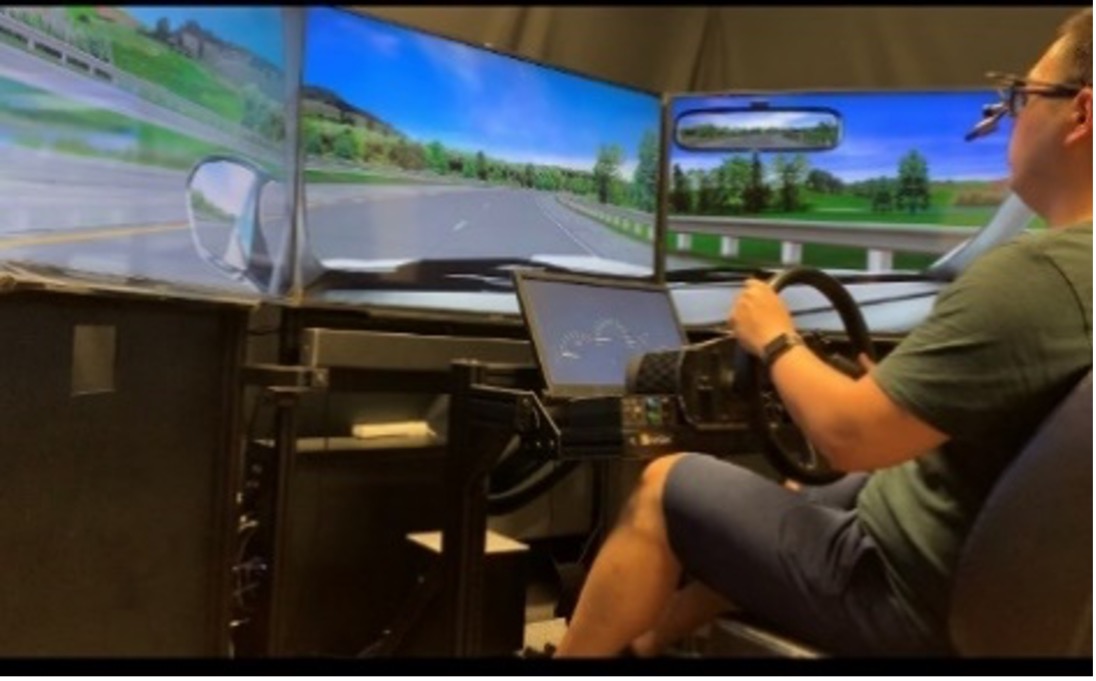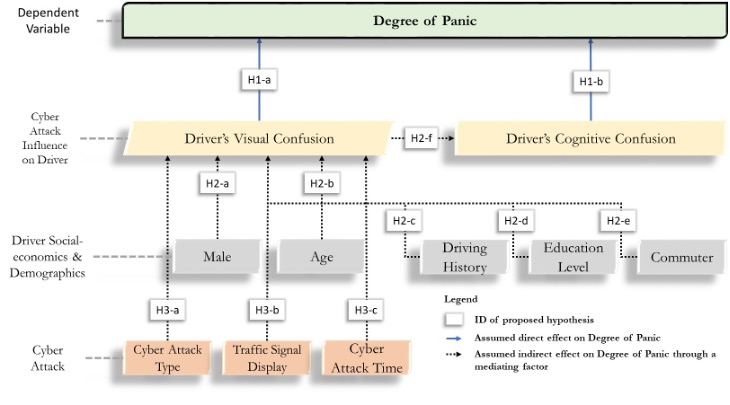C23C16
Understand Vehicle-Driver Complex Behaviors under Cyberattacks and Model the Consequences
to the Urban Traffic System
Investigator(s):
- Zhixia (Richard) Li, University of Cincinnati, ORCID # 0000-0002-7942-4660 (PI)
Project Description:

Figure 1 Research is based on driving simulation data that is already collected
As connected and autonomous vehicles become more prevalent in urban environments, the potential for cyberattacks on these vehicles and their associated infrastructure increases. While considerable attention has been paid to the technical vulnerabilities of these vehicles, a more holistic understanding is required. Specifically, one that factors in the intricate interplay between the vehicle's response to an attack and the human driver's reaction. The behavior of the driver, when faced with an unexpected vehicle response due to a cyberattack, can be unpredictable and can exacerbate or mitigate the impact of the attack. These attacks can have profound consequences on urban traffic systems. It's crucial to understand not only how vehicles might be affected, but also how drivers might respond to such anomalies. Due to the scarcity of available data of vehicle trajectory data under cyber-attacks, the mechanism of vehicle-driver complex under cyber-attacks remains unknown. As it is risky to create real cyber-attacks in real urban traffic signal operations to generate vehicle trajectory data under cyber-attacks. The research proposes a unique method to generate vehicle trajectory and driving behavior data in a driving simulation environment. We will use driving simulator data to from experiment that was already conducted to have drivers drive through a series of intersection driving scenarios that are composed of with cyber-attack and without cyber-attack conditions. During the driving, driver’s trajectories that include vehicle speed, location, acceleration rate, and vehicle’s lateral position, steering wheel angle, gas paddle status, brake status, were collected in real time. The team will use all the data that are collected to analyze driver-vehicle complex’s responses to cyber-attack. Vehicle trajectory data under cyber-attack and without cyber-attack will be compared. The objective of the research is two-fold: (1) understand the immediate responses of vehicle-driver complex during a cyberattack at a connected signalized intersection during driving simulator data; and (2) model the safety effects of vehicle-driver complex and the resulting safety consequence to the urban traffic systems.

Figure 2 Modeling framework to understand contributing factors to degree of panic under cyber-attack and their interrelationships